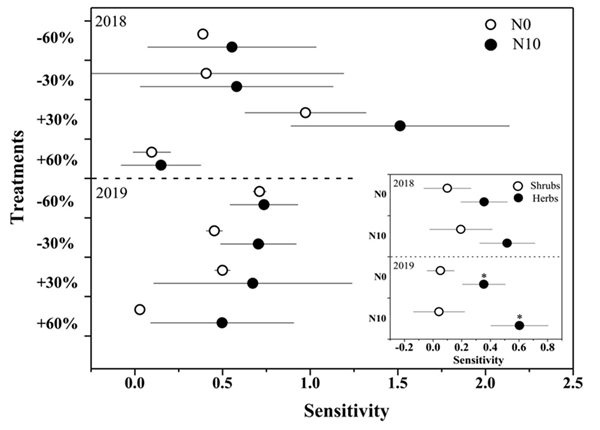Study Reveal Effects of Precipitation and Nitrogen Deposition on Productivity of Desert Shrub Community
2022-07-26
Precipitation variability and nitrogen (N) deposition caused by anthropogenic activities could profoundly impact ecosystem productivity and carbon cycling. In desert ecosystems, vegetation is sensitive to changes in precipitation and N deposition. However, the impacts of large changes in precipitation, especially with a concurrent increase in N content, on plant community remain unclear.
Researchers from Xinjiang Institute of Ecology and Geography, Chinese Academy of Sciences, conducted an experiment to monitor the impacts of five precipitation levels and two N levels on the plant community function and composition from the Junggar desert in Central Asia during the period 2018–2019.
Research results showed that N application increased aboveground net primary productivity (ANPP), but it did not significantly improve the sensitivity of ANPP to precipitation change, which still made a nonlinear model was fitted better than linear model for the ANPP and precipitation under N application treatments. These results suggest that in addition to soil nutrients, community composition and vegetation constraints may also play an important role in mediating ANPP-precipitation relationship in the drylands. These results provide a theoretical basis for predict the future dynamics of terrestrial vegetation more accurately under climate change and increasing nitrogen deposition.
The findings were published in Frontiers in Plant Science, entitled“Effect of nitrogen application on the sensitivity of desert shrub community productivity to precipitation in Central Asia”
Article link: https://www.frontiersin.org/articles/10.3389/fpls.2022.916706/full

Fig. 1 The sensitivity of ANPP and shrubs and herbs (inserted panels) to precipitation change and nitrogen application in 2018 and 2019.

Fig. 2 Relationship between ANPP and amount of precipitation under two nitrogen levels.



